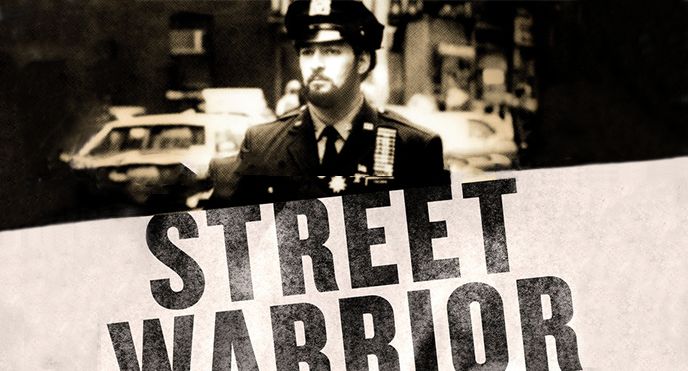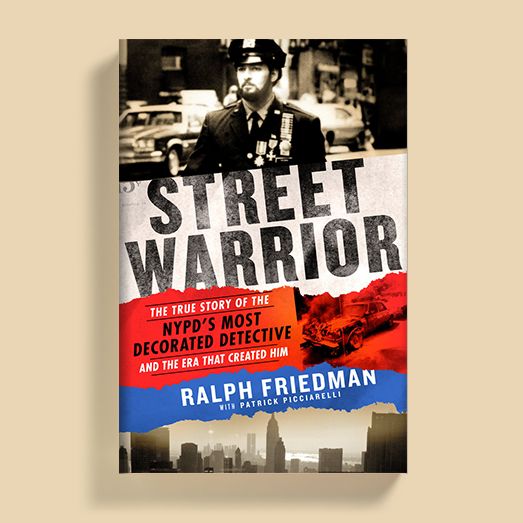By Ralph Friedman and Patrick Picciarelli

November 1, 1972—Confines of the 41st Pct., the Bronx
It was a very cool and exceptionally sunny day, the glare bouncing off the windshield with laser-like annoyance. The neighborhood streets, while somewhat crowded, didn’t contain the teeming humanity that would’ve been present during the summer months. In the humidity festival that is New York during July and August, the South Bronx natives spill onto the streets in an effort to escape the stifling heat of the tenements and high-rise projects. Street gambling, drinking, and hanging out on building stoops were usually a precursor to violence. The higher the temperature, the hotter the tempers flared, and assaults and homicides were sure to follow. You knew autumn arrived in the South Bronx when the domino games moved indoors and the homicide rate began to dip to very high, down from extremely high.
Soon after we’d lost count of how many times we’d driven every street in the command, and with our stomachs growling louder than the car’s motor, we contemplated a trip to a neighboring precinct, where we wouldn’t get poisoned grabbing something to eat. In the middle of our food fantasy—two of cops’ favorite topics are food and sex—the radio run that would change our lives came over the portable: “A signal 10-31, 992 Fox Street, top floor. Units to respond?”
A 10-31 was the code designation for a burglary in progress, a job that obviously required immediate attention. We were a few blocks away from the location. I nodded to Kal and keyed the radio. “Four-One Anti-Crime in plainclothes will take that, Central.” Vocalizing that we were in civvies might save us from getting shot by a unit from another command that was passing through without knowing who we were; although two white men in military fatigue jackets and jeans (the unofficial uniform of Anti-Crime cops) waving guns should have been a strong hint that we were the good guys.
“Anything further, Central?” I asked.
The dispatcher came back: “Anonymous call of a male entering the location via the roof. Nothing further.”
“Nothing further” left open myriad possibilities: Was the bad guy armed? (Most burglars aren’t because it raises the degree of the crime, and, as such, the jail sentence, but maybe this burglar hadn’t read the penal law.) A description of the bad guy would’ve been nice, but we didn’t have that either. Or was the job just bullshit, called in by some local asshole to see how many cops would respond for nothing? Bogus calls were an official sport in the South Bronx.
The bottom line was that we had to be careful, and so out came the guns. I’d never worked in another precinct and thus didn’t know how cops elsewhere operated; in the Four-One, the very least you did was have your hand on your firearm for every call you responded to. The proverbial cat stuck in a tree would be no exception. You never knew what to expect, even from the most mundane of calls.
Kal pulled up a few doors away from the Fox Street address off Westchester Avenue. Parking directly in front of a destination address is ill advised in case of a setup. Hard to believe, but there are people who don’t like cops and who think ambushing a few sounds like a fun time. We were the first unit to arrive. The area had a smattering of civilians on the street, some watching the passing parade from a window perch, most not giving us a second glance as we exited the car and ran for number 992. Constant police activity was so common in the South Bronx that the sight of two white men with guns drawn would not have been a rarity.
We knew other cops were on the way, but we didn’t know how long it would take for them to arrive. A burglary-in-progress call usually dictated no sirens to avoid warning the bad guys. Flashing roof lights on radio cars and speed balls on the dashboards of unmarked vehicles were a good tactical alternative because they’re silent, and we wouldn’t hear them until they had already arrived. That said, we were working in the South Bronx, where lights and sirens on police vehicles are a suggestion, not a law, to yield rightof-way. Typical responses from drivers were streams of curses and invectives involving your mother. Drivers did what they wanted to do; only fire department vehicles got respect . . . sometimes.
As we raced toward the entrance to the building, Kal and I kept glancing up at the rooftops. If this call was an ambush, death would most likely come from above. Even if it wasn’t a planned execution, many youths in the area liked to toss stuff off rooftops at responding cops, usually bricks, which often were “preloaded” on roofs in anticipation of the inevitable visit by cops. I’ve seen everything raining down from above. Including commodes. It was bad enough being brained by a brick, but to suffer the indignity of getting crushed by a toilet bowl was the ultimate embarrassment. If you survived, which was highly doubtful, you’d be called Shithead for the rest of your career.
The building was typical for the area: prewar (which war was always the question—some tenements were over a hundred years old), narrow, sometimes with a short cement stairway leading to the door. Buildings varied in condition from serviceable to not fit for human habitation. This one was somewhere in-between. What most of these structures had in common was the overpowering odor of urine throughout the building. Why tenants would pee in their own hallway rather than wait to get into their apartments always mystified me. Maybe they were marking their territory.
Kal was the first in through the door leading from the street. The smell hit us like we got bitch-slapped by a tree limb. After hundreds of times in these broken-down buildings, you’d figure I’d be used to it, but, as with the aroma of a ripe dead body, you never acclimate. Who the hell can live like this? Peeling paint, broken door locks, crud on the floors so deep you can shovel it off. Be it ever so crumbled there’s no place like home, I suppose.
We raced up the stairs as quickly as our feet could carry us. Need I say that these buildings had no elevators? And even if they did, they probably wouldn’t work. “Why are these fucking jobs always on the top floor?” Kal asked as he took the stairs two at a time.
As we hit the top-floor landing, we heard the first scream. Loud and shrill, it came from a female, and she sounded terrified. The hallway was dimly lit with no windows, common with these types of buildings, and the building housed five apartments per floor. The scream focused our attention toward the apartment at the far end of the narrow hallway. The door frame on the apartment was splintered, leaving the door pushed in and off one of its hinges.
I was out of breath and my heart was pounding as Kal and I flanked the frame for a moment and listened for something—anything—that might give us an edge when we entered. Just then we heard another piercing howl, and we knew trying to formulate a tactical plan might not be in the best interest of the victim, who sounded as if she was getting tortured. Our presence was required inside—now.
We busted through what remained of the door, side by side. What met us was total darkness, inky blackness. Blind as a bat, I couldn’t see a damn thing. Entering the building from bright daylight didn’t help, but at least the dimness of the hallway should’ve helped our eyes adjust. It didn’t. Later I’d find out that the apartment’s windows were covered in heavy blankets, sheets, and curtains that effectively blocked out all light.
The dark was disorienting; we had left our flashlights in the car because we were working what was left of the day tour. We both yelled “Police!” several times just as another shriek blasted from somewhere in front of us.
We took a few cautious steps forward, trying to identify exactly where the screams were coming from. I was hoping my eyes would get used to the darkness, but that didn’t happen.
Something moved, a sound to our right. Kal said, “What the fuck?” and the shooting started.
Muzzle blasts lit up the area. We’d passed through a short foyer adjacent to the living room and were now standing in a hallway that led to the rear of the apartment. There was a black male three feet in front of us, shirtless, gun extended, firing rapidly. Kal went down almost immediately, firing his revolver as he pitched forward. The noise of the gunfight in a confined space was ear-shattering, and I felt as if an ice pick was being shoved into my brain.
I had my gun extended and was firing rounds at the guy who was shooting at us. The room was caught up in a strobe-like miasma of light, screams, and curses.
The gunman tried to get by me, but I grabbed his shoulder and we struggled, grunting and swearing, although our voices sounded muffled given the affect the gunshots had on my hearing. Everything was happening very quickly, yet it felt like slow motion. I was fighting for my life, nearly deaf from the gunshots, and wondering if I’d been hit.
The shooter was about my height, medium build. A river of adrenaline was pumping through me, and I knew that if I didn’t put him down, I was gonna die. I heard the approaching cavalry—the job now a rapid response “shots fired,” allowing for flashing lights and sirens all the way—or thought I did. The troops were coming, and I hoped they’d arrive in time. As we fought, I pressed my gun against the gunman’s chest, hoping that I still had ammo, and fired.
I heard the welcoming sound of a boom, no empty chamber click. The gunman went down like a dropped anchor. I found out later that he’d been hit a few times, but my last round got him square in the heart. The three of us had fired a total of eighteen rounds in what couldn’t have been more than a ten-second gun battle in a space the area of a medium-size closet.
I was too pumped to feel fright or exhaustion. I dropped to the floor and grabbed Kal; he was unconscious. I didn’t see much blood—shit, I still didn’t see much of anything. His fatigue jacket had absorbed most of it from several gunshots.
The apartment began filling with cops. The covers on the windows were being ripped down and everyone was talking, yelling. Sunlight streamed through the windows.
I was practically sitting on the dead gunman who was shoulder to shoulder with Kal. Now I could see that there was actually blood everywhere.
“My partner, he’s hit!” I hollered.
Cops kneeled down. I heard exclamations of “Oh, shit!,” “He’s shot fucking bad!” More cops were pouring into the apartment. I tried to lift Kal and what seemed like a dozen hands joined the effort. Other cops pushed aside responding officers to make a path. We hoisted him in the air and raced down the stairs. There was no time to wait for an ambulance; seconds counted. Kal was going to be transported by radio car.
Someone had the presence of mind to call the dispatcher to have additional units clear the streets that lead to Jacobi Medical Center, which was over a mile away. Jacobi was where you took injured cops; they had excellent trauma teams. Department cars would block traffic at intersections in a race to get Kal immediate care.
We hit the street running, Kal seemingly lifeless in our grasp. The neighborhood denizens packed the street and were eerily quiet. Now was not the time to taunt the police. While they knew they could get away with almost anything right now, we would return and wouldn’t be in a good mood.
Kal was placed as gently as possible on a cop’s lap in the back of a marked car and the driver gunned it, lights and siren on overload. But there was a problem.
When time—seconds—meant the difference between life and death for Kal (if he wasn’t already dead), numerous responding radio cars had blocked the street, and the operators were everywhere but in their cars. I heard the driver of the car Kal was in, whose name has been lost to me by the span of years, say “Fuck this!” before he began to ram the radio cars out of the way.
I watched the car disappear down the street, now joined by a phalanx of escorting vehicles. I wished I were leaving with him, but knew I wasn’t going anywhere; a platoon of bosses would be on the scene shortly to interview me. As I reentered the building, two uniforms were supporting a woman who looked to be about thirty down the stairs. One cop was calling for an ambulance. She was banged up pretty badly, but otherwise seemed in decent shape. I figured she was the source of the screams we’d heard upstairs, and, when the gunfire started, she must’ve dove for cover in another room in the apartment.
I was being pulled in many directions. Questions came from everywhere. I didn’t even know most of the brass who responded to the scene. Things got blurry; I was operating automatically, giving answers, taking accolades, recounting the shooting from various perspectives, and responding to the same questions from different sources over and over. I had lost track of time. I either remained on Fox Street for a few hours, or perhaps fifteen minutes. Pick one.
All I cared about was Kal. I needed to get to the hospital. My mind and heart were racing and I was beyond ramped up.
Continue to read the second part of Street Warrior here.
Copyright © 2017 by Ralph Friedman and Patrick Picciarelli

PATRICK PICCIARELLI, a Vietnam vet, spent twenty years in the NYPD and is a licensed private investigator and adjunct writing professor at Seton Hill University. The author of Jimmy the Wags, My Life in the NYPD, he regularly contributes to Hardboiled magazine, among others. He lives in Monessen, PA.
RALPH FRIEDMAN served the NYPD from 1970 to 1984, at which time he retired due to being injured in the line of duty. In his short career he amassed more awards and honors than any other detective in the NYPD’s history. Street Warrior: The True Story of the NYPD’s Most Decorated Detective and the Era That Created Him chronicles his career.
Read more at Thought Matters. Sign up for originals essays, interviews, and excerpts from some of the most influential minds of our age.
